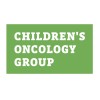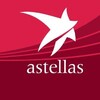
Treatment of Newly Diagnosed Acute Lymphoblastic Leukemia in Children and Adolescents
Acute Lymphoblastic LeukemiaPediatricAcute lymphoblastic leukemia (ALL) is the most common cancer diagnosed in children. The cancer comes from a cell in the blood called a lymphocyte. Normal lymphocytes are produced in the bone marrow (along with other blood cells) and help fight infections. In ALL, the cancerous lymphocytes are called lymphoblasts. They do not help fight infection and crowd out the normal blood cells in the bone marrow so that the body cannot make enough normal blood cells. ALL is always fatal if it is not treated. With current treatments, most children and adolescents with this disease will be cured. The standard treatment for ALL involves about 2 years of chemotherapy. The drugs that are used, and the doses of the drugs, are similar but not identical for all children and adolescents with ALL. Some children and adolescents receive stronger treatment, especially during the first several months. A number of factors are used to decide how strong the treatment should be to give the best chance for cure. These factors are called "risk factors". This trial is studying the use of a new, updated set of risk factors to decide how strong the treatment will be. The study also will test a new way of dosing a chemotherapy drug called pegaspargase (which is part of the standard treatment for ALL) based on checking levels of the drug in the blood and adjusting the dose based on the levels.

Inotuzumab Ozogamicin in Treating Younger Patients With B-Lymphoblastic Lymphoma or Relapsed or...
Recurrent B Acute Lymphoblastic LeukemiaRecurrent B Lymphoblastic Lymphoma2 moreThis phase II trial studies how well inotuzumab ozogamicin works in treating younger patients with B-lymphoblastic lymphoma or CD22 positive B acute lymphoblastic leukemia that has come back (relapsed) or does not respond to treatment (refractory). Inotuzumab ozogamicin is a monoclonal antibody, called inotuzumab, linked to a toxic agent called ozogamicin. Inotuzumab attaches to CD22 positive cancer cells in a targeted way and delivers ozogamicin to kill them.

Pevonedistat Plus Azacitidine Versus Single-Agent Azacitidine as First-Line Treatment for Participants...
Myelodysplastic SyndromeLeukemia5 moreThe purpose of this study is to determine whether the combination of pevonedistat and azacitidine improves event-free survival (EFS) when compared with single-agent azacitidine. (An event is defined as death or transformation to AML in participants with MDS or CMML, whichever occurs first, and is defined as death in participants with low-blast AML).

Pevonedistat, Cytarabine, and Idarubicin in Treating Patients With Acute Myeloid Leukemia
Acute Myeloid Leukemia Arising From Previous Myelodysplastic SyndromeAcute Myeloid Leukemia With Myelodysplasia-Related Changes1 moreThis phase Ib/II trial studies the side effects and best dose of pevonedistat and to see how well it works in combination with cytarabine and idarubicin in treating patients with acute myeloid leukemia. Pevonedistat may stop the growth of cancer cells by blocking some of the enzymes needed for cell growth. Drugs used in chemotherapy, such as cytarabine and idarubicin, work in different ways to stop the growth of cancer cells, either by killing the cells, by stopping them from dividing, or by stopping them from spreading. Given pevonedistat, cytarabine, and idarubicin may work better in treating patients with acute myeloid leukemia.

Study Evaluating Safety and Efficacy of JCAR017 in Subjects With Relapsed or Refractory Chronic...
LeukemiaLymphocytic4 moreThis is a Phase 1/2, open-label, multicenter study to determine the efficacy and safety of JCAR017 in adult subjects with relapsed or refractory CLL or SLL. The study will include a Phase 1 part to determine the recommended dose of JCAR017 monotherapy in subjects with relapsed or refractory CLL or SLL, followed by a Phase 2 part to further assess the efficacy and safety of JCAR017 monotherapy treatment at the recommended dose. A separate Phase 1 cohort will assess the combination of JCAR017 and concurrent ibrutinib. Another separate Phase 1 cohort will assess the combination of JCAR017 and concurrent venetoclax. In all subjects, the safety, efficacy, and pharmacokinetics (PK) of JCAR017 will be evaluated.

Ibrutinib as Early Therapy in Chronic Lymphocytic Leukemia (CLL)
Malignant Neoplasms Stated as Primary Lymphoid HaematopoieticChronic Lymphocytic Leukemia1 moreThe standard approach to managing chronic lymphocytic leukemia (CLL) and small lymphocytic leukemia (SLL) is to wait until you have symptoms before treatment is given. The goal of this clinical research study is to learn if providing earlier treatment for CLL or SLL with ibrutinib in patients who do not have symptoms will be more effective than waiting until symptoms develop. This is an investigational study. Ibrutinib is FDA approved and commercially available for the treatment of patients with CLL or SLL. It is considered investigational to give ibrutinib to CLL and SLL patients before symptoms develop. The study doctor can describe how the study drug is designed to work. Up to 50 participants will be enrolled in this study. All will take part at MD Anderson.

Total Therapy XVII for Newly Diagnosed Patients With Acute Lymphoblastic Leukemia and Lymphoma
Acute Lymphoblastic LeukemiaAcute Lymphoblastic LymphomaThe overarching objective of this study is to use novel precision medicine strategies based on inherited and acquired leukemia-specific genomic features and targeted treatment approaches to improve the cure rate and quality of life of children with acute lymphoblastic leukemia (ALL) and acute lymphoblastic lymphoma (LLy). Primary Therapeutic Objectives: To improve the event-free survival of provisional standard- or high-risk patients with genetically or immunologically targetable lesions or minimal residual disease (MRD) ≥ 5% at Day 15 or Day 22 or ≥1% at the end of Remission Induction, by the addition of molecular and immunotherapeutic approaches including tyrosine kinase inhibitors or chimeric antigen receptor (CAR) T cell / blinatumomab for refractory B-acute lymphoblastic leukemia (B-ALL) or B-lymphoblastic lymphoma (B-LLy), and the proteasome inhibitor bortezomib for those lacking targetable lesions. To improve overall treatment outcome of T acute lymphoblastic leukemia (T-ALL) and T-lymphoblastic lymphoma (T-LLy) by optimizing pegaspargase and cyclophosphamide treatment and by the addition of new agents in patients with targetable genomic abnormalities (e.g., activated tyrosine kinases or JAK/STAT mutations) or by the addition of bortezomib for those who have a poor early response to treatment but no targetable lesions, and by administering nelarabine to T-ALL and T-LLy patients with leukemia/lymphoma cells in cerebrospinal fluid at diagnosis or MRD ≥0.01% at the end of induction. To determine in a randomized study design whether the incidence and/or severity of acute vincristine-induced peripheral neuropathy can be reduced by decreasing the dosage of vincristine in patients with the high-risk CEP72 TT genotype or by shortening the duration of vincristine therapy in standard/high-risk patients with the CEP72 CC or CT genotype. Secondary Therapeutic Objectives: To estimate the event-free survival and overall survival of children with ALL and to assess the non-inferiority of TOTXVII compared to the historical control given by TOTXVI. To estimate the event-free survival and overall survival of children with LLy when ALL diagnostic and treatment approaches are used. To evaluate the efficacy of blinatumomab in B-ALL patients with end of induction MRD ≥0.01% to <1% and those (regardless of MRD level or TOTXVII risk category) with the genetic subtypes of BCR-ABL1, ABL-class fusion, JAK-STAT activating mutation, hypodiploid, iAMP21, ETV6-RUNX1-like, MEF2D, TCF3-HLF, or BCL2/MYC or with Down syndrome, by comparing event-free survival to historical control from TOTXVI. To determine the tolerability of combination therapy with ruxolitinib and Early Intensification therapy in patients with activation of JAK-STAT signaling that can be inhibited by ruxolitinib and Day 15 or Day 22 MRD ≥5%, Day 42 MRD ≥1%, or LLy patients without complete response at the End of Induction and all patients with early T cell precursor leukemia. Biological Objectives: To use data from clinical genomic sequencing of diagnosis, germline/remission and MRD samples to guide therapy, including incorporation of targeted agents and institution of genetic counseling and cancer surveillance. To evaluate and implement deoxyribonucleic acid (DNA) and ribonucleic acid (RNA) sequencing-based methods to monitor levels of MRD in bone marrow, blood, and cerebrospinal fluid. To assess clonal diversity and evolution of pre-leukemic and leukemic populations using DNA variant detection and single-cell genomic analyses in a non-clinical, research setting. To identify germline or somatic genomic variants associated with drug resistance of ALL cells to conventional and newer targeted anti-leukemic agents in a non-clinical, research setting. To compare drug sensitivity of ALL cells from diagnosis to relapse in vitro and in vivo and determine if acquired resistance to specific agents is related to specific somatic genome variants that are not detected or found in only a minor clone at initial diagnosis. Supportive Care Objectives To conduct serial neurocognitive monitoring of patients to investigate the neurocognitive trajectory, mechanisms, and risk factors. To evaluate the impact of low-magnitude high frequency mechanical stimulation on bone mineral density and markers of bone turnover. There are several Exploratory Objectives.

A Study of ASP2215 Versus Salvage Chemotherapy In Patients With Relapsed or Refractory Acute Myeloid...
Acute Myeloid Leukemia With FMS-like Tyrosine Kinase (FLT3) MutationThe purpose of this study is to determine the clinical benefit of ASP2215 therapy in participants with FMS-like tyrosine kinase (FLT3) mutated AML who are refractory to or have relapsed after first-line AML therapy as shown with overall survival (OS) compared to salvage chemotherapy. In addition, this study will evaluate safety as well as determine the overall efficacy in event-free survival (EFS) and complete remission (CR) rate of ASP2215 compared to salvage chemotherapy.

Haploidentical BMT With Post-Transplant Cyclophosphamide and Bendamustine
Acute Lymphoblastic LeukemiaAcute Myelogenous Leukemia13 moreThe purpose of this study is to evaluate the safety of progressively substituting day +3 and +4 post-transplant cyclophosphamide (PT-CY) with post-transplant bendamustine (PT-BEN) in myeloablative (MAC) haploidentical hematopoietic cell transplantation (HHCT) for patients with hematological malignancies. The goal of the Phase 1 component of the study is to evaluate the safety of progressively substituting post-transplant cyclophosphamide (PT-CY) given on Days +3 and +4 with bendamustine (PT-BEN). The Phase I component of the study has been completed. The Phase Ib component of the study will continue to evaluate the safety and efficacy of subjects who receive PT-BEN on Days +3 and +4 at the maximum tolerated dose determined by Phase I. The Phase Ib component of the study has been completed. Approximately, 18-36 subjects will be treated as part of Phase I and 15 as part of Phase Ib. Approximately 18 subjects will be used as controls, subjects that receive no PET-BEN, for direct comparison. Total, approximately 38-56 treatment and control patients and 38-56 donor subjects will be enrolled.

Efficacy and Safety of Immunotherapy With Allogeneic Dendritic Cells, DCP-001, in Patients With...
Acute Myeloid Leukemia in RemissionPhase II study to evaluate safety and efficacy of DCP-001 in patients with AML in CR, and with presence of MRD
